Diagram of location of lymph nodes in body. Understanding the Lymphatic System: A Comprehensive Guide to Lymph Nodes and Their Functions
Where are the major lymph nodes located in the human body. How does the lymphatic system contribute to overall health. What are the main functions of lymph nodes in the immune system. How can you maintain a healthy lymphatic system.
The Lymphatic System: An Essential Component of Human Health
The lymphatic system plays a crucial role in maintaining our overall health and well-being. This complex network of vessels, tissues, and organs works tirelessly to support our immune system, remove toxins, and maintain fluid balance throughout the body. At the heart of this system are the lymph nodes, small bean-shaped structures that act as filters and defense outposts against harmful invaders.
Understanding the lymphatic system and the location of lymph nodes is essential for both medical professionals and individuals interested in their health. This knowledge can help in early detection of potential health issues and in maintaining optimal lymphatic function.
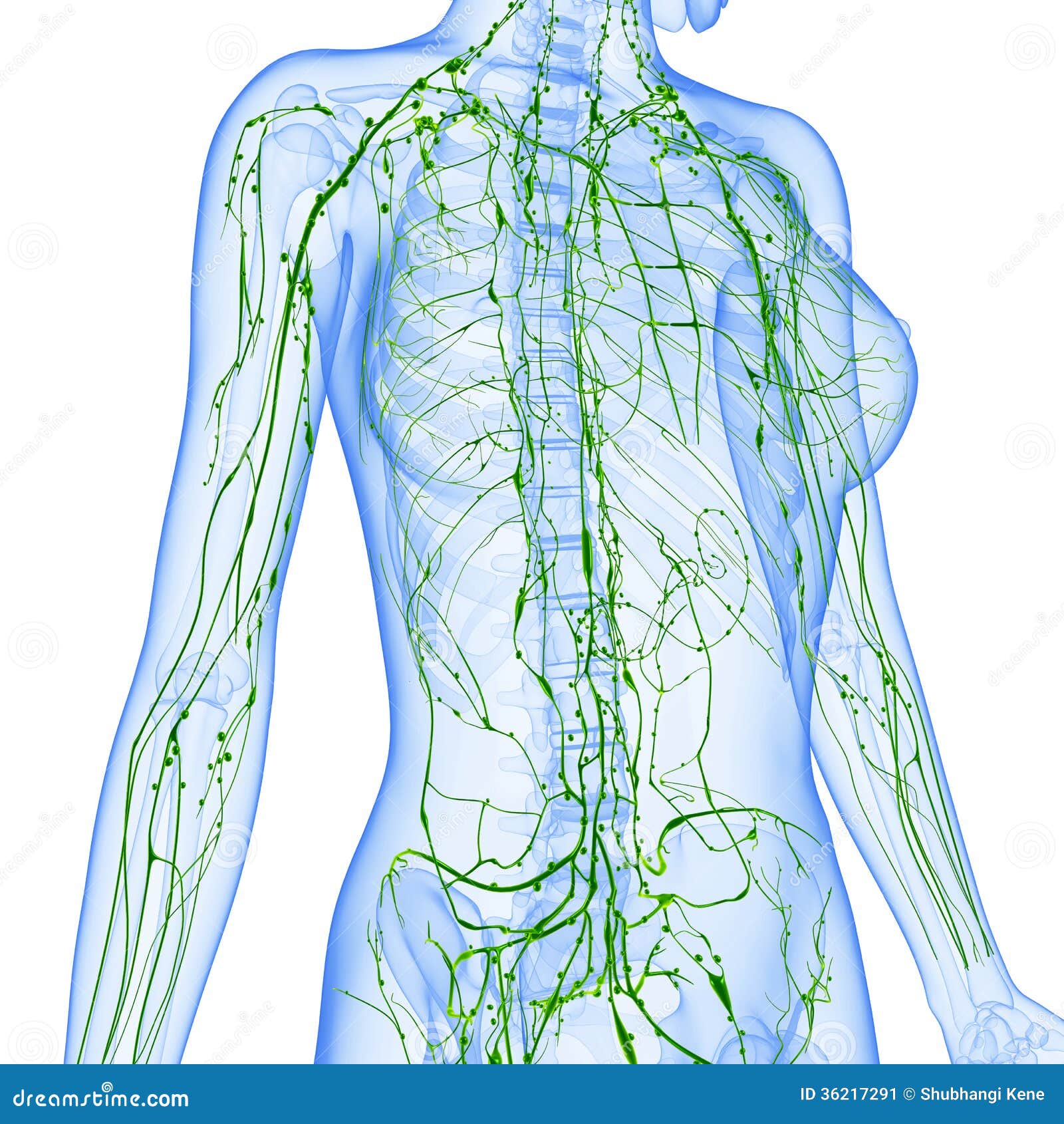
Mapping the Lymphatic System: Where Are Lymph Nodes Located?
Lymph nodes are strategically positioned throughout the body, forming clusters in key areas. These locations serve as checkpoints for the lymphatic fluid as it travels through the body. The major lymph node locations include:
- Neck (cervical lymph nodes)
- Armpits (axillary lymph nodes)
- Chest (mediastinal lymph nodes)
- Abdomen (mesenteric lymph nodes)
- Groin (inguinal lymph nodes)
Each of these areas contains multiple lymph nodes that work together to filter lymph and trap potential pathogens. For instance, the cervical lymph nodes in the neck are often the first to become swollen when fighting an upper respiratory infection, while the axillary lymph nodes may enlarge during breast cancer or certain arm infections.
The Significance of Lymph Node Distribution
Why are lymph nodes distributed in this particular pattern? The arrangement of lymph nodes throughout the body ensures that lymphatic fluid from all regions can be efficiently filtered and monitored. This distribution allows the immune system to quickly identify and respond to threats, regardless of where they enter the body.
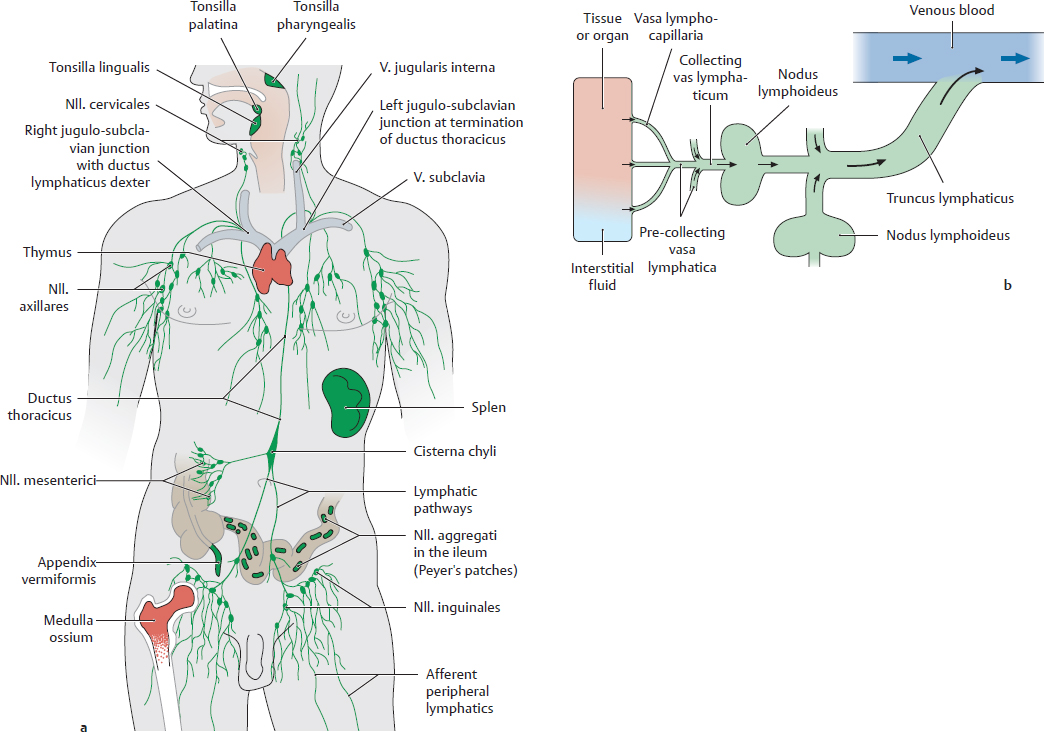
The Vital Functions of Lymph Nodes in Immune Defense
Lymph nodes serve as critical components of our body’s defense system. Their primary functions include:
- Filtration of lymph fluid
- Trapping and destroying pathogens
- Production and storage of lymphocytes
- Initiation of immune responses
How do lymph nodes carry out these functions? As lymph fluid passes through the nodes, it is carefully screened for any foreign particles or pathogens. If detected, these invaders are trapped within the node, where they encounter a variety of immune cells ready to neutralize the threat.
Lymph nodes also act as production and storage sites for lymphocytes, particularly B and T cells. These specialized white blood cells are crucial for mounting targeted immune responses against specific pathogens.
The Lymphatic System’s Role in Fluid Balance and Toxin Removal
Beyond its immune functions, the lymphatic system plays a vital role in maintaining fluid balance throughout the body. How does this process work? As blood circulates, some fluid naturally seeps out of capillaries into surrounding tissues. The lymphatic system collects this excess fluid, now called lymph, and returns it to the bloodstream, preventing swelling and edema.

In addition to fluid balance, the lymphatic system aids in toxin removal. As lymph is filtered through lymph nodes, harmful substances and cellular debris are captured and eliminated. This cleansing action helps maintain a healthy internal environment and supports overall well-being.
Common Lymphatic System Disorders and Their Impact on Health
While the lymphatic system is remarkably efficient, it can sometimes face challenges. Some common lymphatic system disorders include:
- Lymphedema: swelling due to lymph fluid buildup
- Lymphadenitis: inflammation of lymph nodes
- Lymphoma: cancer of the lymphatic system
These conditions can have significant impacts on health and quality of life. For example, lymphedema can cause discomfort and limit mobility, while lymphoma may require extensive treatment and can be life-threatening if left unchecked.
Recognizing Signs of Lymphatic System Issues
How can you tell if your lymphatic system might be struggling? Some signs to watch for include:

- Swollen or tender lymph nodes
- Unexplained swelling in limbs or other body parts
- Frequent infections or slow healing
- Fatigue or unexplained weight gain
If you experience these symptoms persistently, it’s important to consult with a healthcare professional for proper evaluation and guidance.
Maintaining a Healthy Lymphatic System: Lifestyle and Dietary Approaches
Keeping your lymphatic system in top shape is crucial for overall health. What can you do to support your lymphatic system? Consider incorporating these strategies into your daily routine:
- Stay hydrated: Adequate water intake helps maintain proper lymph flow
- Exercise regularly: Physical activity stimulates lymph circulation
- Practice dry brushing: This technique may help stimulate lymph flow in the skin
- Maintain a healthy diet: Focus on anti-inflammatory foods and those rich in antioxidants
- Manage stress: Chronic stress can negatively impact lymphatic function
By adopting these habits, you can help ensure your lymphatic system functions optimally, supporting your overall health and well-being.

The Intersection of Lymphatic Health and Other Body Systems
The lymphatic system doesn’t operate in isolation; it’s deeply interconnected with other body systems. How does lymphatic health impact overall wellness? Consider these connections:
- Cardiovascular system: The lymphatic system works alongside blood circulation to maintain fluid balance
- Digestive system: Lymphatic vessels in the intestines (lacteals) help absorb dietary fats
- Respiratory system: Lymphoid tissue in the respiratory tract helps defend against inhaled pathogens
- Nervous system: Recent research suggests a lymphatic-like system in the brain, potentially impacting neurological health
Understanding these interconnections highlights the importance of maintaining a healthy lymphatic system for overall bodily function and wellness.
The Lymphatic System and Exercise: A Symbiotic Relationship
Physical activity is particularly beneficial for lymphatic health. Unlike the cardiovascular system, which has the heart to pump blood, the lymphatic system relies on body movement to circulate lymph fluid. How does exercise benefit the lymphatic system?
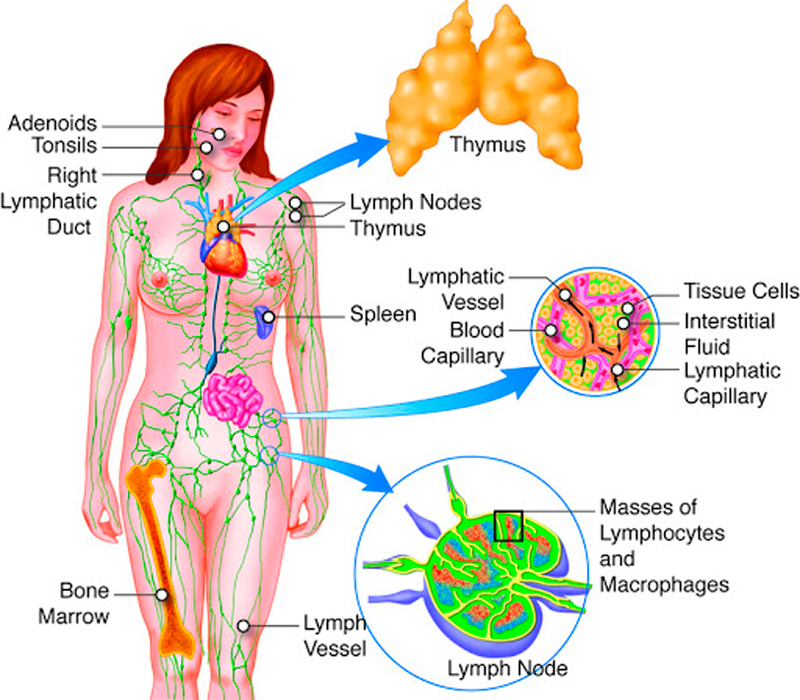
- Increased muscle contractions help pump lymph through vessels
- Deep breathing during exercise aids lymph flow in the chest and abdomen
- Improved circulation enhances the overall efficiency of the lymphatic system
Regular exercise, therefore, is not just good for cardiovascular health; it’s essential for maintaining a robust lymphatic system.
Advancements in Lymphatic System Research and Treatment
The field of lymphatic system research is constantly evolving, with new discoveries and treatment approaches emerging regularly. What are some recent advancements in this area?
- Improved imaging techniques for visualizing lymphatic vessels and nodes
- Development of targeted therapies for lymphatic disorders
- Exploration of the lymphatic system’s role in various diseases, including cancer and neurological conditions
- Advances in lymphedema treatment, including microsurgery techniques
These advancements offer hope for improved diagnosis, treatment, and management of lymphatic system disorders in the future.

The Promise of Immunotherapy and the Lymphatic System
One particularly exciting area of research involves harnessing the power of the lymphatic system in cancer treatment. How is this being explored? Immunotherapy approaches, which stimulate the body’s own immune system to fight cancer, often target lymphocytes and other immune cells that are abundant in lymph nodes. By enhancing the body’s natural defenses, these treatments show promise in combating various types of cancer.
The Lymphatic System Across the Lifespan: From Infancy to Old Age
The lymphatic system undergoes changes throughout our lives, adapting to our body’s needs at different stages. How does the lymphatic system evolve as we age?
- Infancy and childhood: The lymphatic system is particularly active, helping to build immunity
- Adolescence: Continued development and maturation of lymphoid tissues
- Adulthood: Peak function, with the system playing a crucial role in maintaining health
- Old age: Gradual decline in lymphatic function, potentially impacting immune responses
Understanding these changes can help individuals and healthcare providers better manage lymphatic health throughout life.
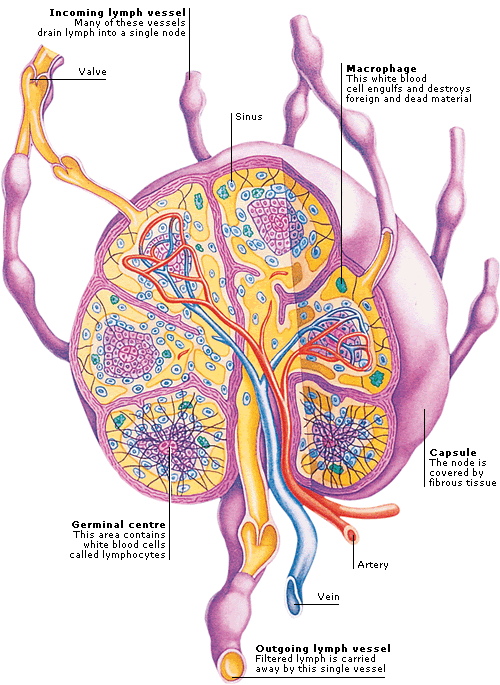
Supporting Lymphatic Health in Older Adults
As we age, maintaining a healthy lymphatic system becomes increasingly important. What strategies can older adults employ to support their lymphatic health?
- Engage in regular, gentle exercise like walking or swimming
- Stay well-hydrated and maintain a nutrient-rich diet
- Consider lymphatic massage or manual lymph drainage techniques
- Be vigilant about skin care to prevent infections that could stress the lymphatic system
By adopting these practices, older adults can help maintain optimal lymphatic function, supporting their overall health and well-being in their golden years.
30+ Fotos, Bilder und lizenzfreie Bilder zu Lymphatic System Diagram
Bilder
- Bilder
- Fotos
- Grafiken
- Vektoren
- Videos
Videos zu lymphatic system diagram ansehen
Durchstöbern Sie 38
lymphatic system diagram Stock-Fotografie und Bilder. Oder starten Sie eine neue Suche, um noch mehr Stock-Fotografie und Bilder zu entdecken.
Sortieren nach:
Am beliebtesten
anatomie des menschlichen lymphsystems – lymphatic system diagram stock-fotos und bilder
Anatomie des menschlichen Lymphsystems
immunsystem – lymphatic system diagram stock-grafiken, -clipart, -cartoons und -symbole
Immunsystem
Immunsystem. Menschliche Anatomie. Menschliche Silhouette mit inneren Organen.
Menschliche Anatomie. Menschliche Silhouette mit inneren Organen.
hautgewebezellen, hautschichten, blut in der vene – lymphatic system diagram stock-grafiken, -clipart, -cartoons und -symbole
Hautgewebezellen, Hautschichten, Blut in der Vene
infografik-design-vorlage 5 schritte. ästhetik-geschäftskonzept. teamarbeit, strategiestruktur für den erfolg. einfache linienvektorgrafik. vektor-illustration. – lymphatic system diagram stock-grafiken, -clipart, -cartoons und -symbole
Infografik-Design-Vorlage 5 Schritte. Ästhetik-Geschäftskonzept….
standorte der wichtigsten lymphknoten vektorillustration – lymphatic system diagram stock-grafiken, -clipart, -cartoons und -symbole
Standorte der wichtigsten Lymphknoten Vektorillustration
antike illustration: lymphsystem – lymphatic system diagram stock-grafiken, -clipart, -cartoons und -symbole
Antike Illustration: Lymphsystem
schleimhaut-immunsystem-diagramm, medizinische vektor-illustration – lymphatic system diagram stock-grafiken, -clipart, -cartoons und -symbole
Schleimhaut-Immunsystem-Diagramm, medizinische Vektor-Illustration
Schleimhaut-Immunsystem-Diagramm. Schleim- oder Darm-assoziiertes lymphatisches Gewebe. Medizinische Vektorillustration
Schleim- oder Darm-assoziiertes lymphatisches Gewebe. Medizinische Vektorillustration
immunsystem hautzellen und antibodies – lymphatic system diagram stock-grafiken, -clipart, -cartoons und -symbole
Immunsystem Hautzellen und antibodies
Zellen des Immunsystems. Makrophagen, T-Zelle, B-Zelle und Antikörper.
white blutkörperchen überblick – lymphatic system diagram stock-fotos und bilder
White Blutkörperchen Überblick
Haupt-Leukozyten der weißen Blutkörperchen Typ Übersicht
vektortypen von blutzellen. erythrozyten, eosinophile, neutrophil, thrombozyten, leukozyten, lymphozyten, monozyten, basophile usw. bildungsliniendiagramm – lymphatic system diagram stock-grafiken, -clipart, -cartoons und -symbole
Vektortypen von Blutzellen. Erythrozyten, Eosinophile, Neutrophil,
vektortypen von blutzellen. erythrozyten, eosinophile, neutrophil, thrombozyten, leukozyten, lymphozyten, monozyten, basophile usw. bildungsdiagramm – lymphatic system diagram stock-grafiken, -clipart, -cartoons und -symbole
bildungsdiagramm – lymphatic system diagram stock-grafiken, -clipart, -cartoons und -symbole
Vektortypen von Blutzellen. Erythrozyten, Eosinophile, Neutrophil,
blut-stammzellen – lymphatic system diagram stock-grafiken, -clipart, -cartoons und -symbole
Blut-Stammzellen
Blutstammzelltypen. Bearbeitbare Vektorillustration isoliert auf weißem Hintergrund. Erythrozyten, Blutplättchen, Leukozyten, Lymphozyten, Monozyten und mehr. Medizinisches Bildungsplakat im Querformat.
zellen des immunsystems. – lymphatic system diagram stock-grafiken, -clipart, -cartoons und -symbole
Zellen des Immunsystems.
Zellen des Immunsystems. Medizinischer Nutzen, das Studium der Immunologie. Vektor-Design-Elemente.
selbst erneuernde stammzellen – lymphatic system diagram stock-grafiken, -clipart, -cartoons und -symbole
Selbst erneuernde Stammzellen
Selbsterneuernde Stammzelle. Blutzelltypen. Bearbeitbare Vektorillustration isoliert auf weißem Hintergrund. Erythrozyten, Blutplättchen, Leukozyten, Lymphozyten, Monozyten und mehr. Pädagogisches medizinisches Poster.
Blutzelltypen. Bearbeitbare Vektorillustration isoliert auf weißem Hintergrund. Erythrozyten, Blutplättchen, Leukozyten, Lymphozyten, Monozyten und mehr. Pädagogisches medizinisches Poster.
weiße blutzellenbildung – lymphatic system diagram stock-fotos und bilder
Weiße Blutzellenbildung
seo-planung vektor-glyphen-symbol – lymphatic system diagram stock-grafiken, -clipart, -cartoons und -symbole
SEO-Planung Vektor-Glyphen-Symbol
SEO Planing Related Vector Glyph Symbol. isoliert auf weißem Hintergrund. Vektor-Illustration.
akne-typen. gesichtsinfektionen, pickel und hautentzündungen. hautpflege, gesichtsakne ausbruch. dermatologische epidermiserkrankung neuer vektorsatz – lymphatic system diagram stock-grafiken, -clipart, -cartoons und -symbole
Akne-Typen. Gesichtsinfektionen, Pickel und Hautentzündungen….
cfs signiert vektor-infografik-vorlage – lymphatic system diagram stock-grafiken, -clipart, -cartoons und -symbole
CFS signiert Vektor-Infografik-Vorlage
me zeichen vektor-infografik-vorlage – lymphatic system diagram stock-grafiken, -clipart, -cartoons und -symbole
ME zeichen Vektor-Infografik-Vorlage
ME signiert Vektor-Infografik-Vorlage. Schwindel, vergrößerte Lymphknoten präsentieren Designelemente. Datenvisualisierung in 5 Schritten. Zeitachsendiagramm verarbeiten. Workflow-Layout mit linearen Symbolen
Schwindel, vergrößerte Lymphknoten präsentieren Designelemente. Datenvisualisierung in 5 Schritten. Zeitachsendiagramm verarbeiten. Workflow-Layout mit linearen Symbolen
standorte der wichtigsten lymphknoten vektorillustration – lymphatic system diagram stock-grafiken, -clipart, -cartoons und -symbole
Standorte der wichtigsten Lymphknoten Vektorillustration
standorte der wichtigsten lymphknoten und lymphströme. vektorgrafik – lymphatic system diagram stock-grafiken, -clipart, -cartoons und -symbole
Standorte der wichtigsten Lymphknoten und Lymphströme….
standorte der wichtigsten lymphknoten und lymphströme. vektorgrafik – lymphatic system diagram stock-grafiken, -clipart, -cartoons und -symbole
Standorte der wichtigsten Lymphknoten und Lymphströme….
standorte der wichtigsten lymphknoten vektorillustration ( kein text ) – lymphatic system diagram stock-grafiken, -clipart, -cartoons und -symbole
Standorte der wichtigsten Lymphknoten Vektorillustration ( kein…
standorte der wichtigsten lymphknoten und lymphströme.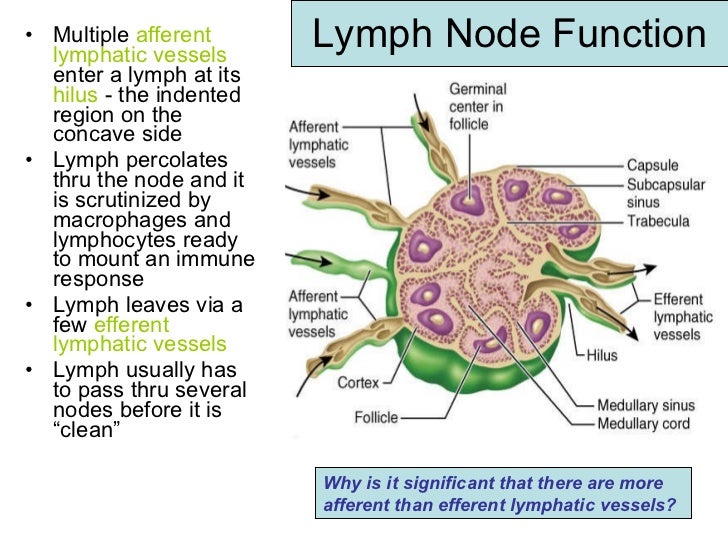 vektorgrafik ( kein text ) – lymphatic system diagram stock-grafiken, -clipart, -cartoons und -symbole
vektorgrafik ( kein text ) – lymphatic system diagram stock-grafiken, -clipart, -cartoons und -symbole
Standorte der wichtigsten Lymphknoten und Lymphströme….
anatomie des menschlichen lymphsystems – lymphatic system diagram stock-fotos und bilder
Anatomie des menschlichen Lymphsystems
anatomie des menschlichen lymphsystems – lymphatic system diagram stock-fotos und bilder
Anatomie des menschlichen Lymphsystems
anatomie des menschlichen lymphsystems – lymphatic system diagram stock-fotos und bilder
Anatomie des menschlichen Lymphsystems
anatomie des menschlichen lymphsystems – lymphatic system diagram stock-fotos und bilder
Anatomie des menschlichen Lymphsystems
anatomie des menschlichen lymphsystems – lymphatic system diagram stock-fotos und bilder
Anatomie des menschlichen Lymphsystems
anatomie des menschlichen lymphsystems – lymphatic system diagram stock-fotos und bilder
Anatomie des menschlichen Lymphsystems
anatomie des menschlichen lymphsystems – lymphatic system diagram stock-fotos und bilder
Anatomie des menschlichen Lymphsystems
anatomie des menschlichen lymphsystems – lymphatic system diagram stock-fotos und bilder
Anatomie des menschlichen Lymphsystems
anatomie des menschlichen lymphsystems – lymphatic system diagram stock-fotos und bilder
Anatomie des menschlichen Lymphsystems
medizinischer hintergrund des menschlichen lymphsystems – lymphatic system diagram stock-fotos und bilder
Medizinischer Hintergrund des menschlichen Lymphsystems
medizinischer hintergrund des menschlichen lymphsystems – lymphatic system diagram stock-fotos und bilder
Medizinischer Hintergrund des menschlichen Lymphsystems
medizinischer hintergrund des menschlichen lymphsystems – lymphatic system diagram stock-fotos und bilder
Medizinischer Hintergrund des menschlichen Lymphsystems
ursprung der zellen des immunsystems. – lymphatic system diagram stock-grafiken, -clipart, -cartoons und -symbole
– lymphatic system diagram stock-grafiken, -clipart, -cartoons und -symbole
Ursprung der Zellen des Immunsystems.
seo-planung vektor-glyphen-symbol – lymphatic system diagram stock-grafiken, -clipart, -cartoons und -symbole
SEO-Planung Vektor-Glyphen-Symbol
SEO Planing Related Vector Glyph Symbol. isoliert auf weißem Hintergrund. Vektor-Illustration.
von 1
All About Dog Lymph Nodes (Location Chart and Photos)
Looking for a dog lymph node location chart? Asking yourself, “Should I be able to feel my dog’s lymph nodes?” and “Where are dog lymph nodes?” Curious why a dog might have swollen lymph nodes? If any of those sound like you, you found the right article! Integrative vet Dr. Julie Buzby answers all your dog lymph node questions. By the end of this article, you’ll know how to locate your dog’s lymph nodes and what to do if you suspect a problem.
If you’ve ever had a really bad cold or sinus infection, you may have experienced swollen glands around your throat. These glands, called lymph nodes, don’t just swell up as an annoyance. Lymph nodes are actually an integral part of your immune system, and the immune system of your canine companion too.
These glands, called lymph nodes, don’t just swell up as an annoyance. Lymph nodes are actually an integral part of your immune system, and the immune system of your canine companion too.
What are dog lymph nodes?
In some ways, lymph nodes are the military training ground for the immune system. Inside these small, bean-shaped organs, immune system “soldiers” (i.e. white blood cells called lymphocytes) await instructions to go to battle against infectious agents or other foreign materials that don’t belong in a dog’s body.
Your dog’s lymph nodes make up one segment of his or her lymphatic system, which is part of the immune system. The lymphatic system is one of the chief ways dogs can fight infections and remove cellular debris from their blood.
The other main components of the lymphatic system are:
- Other lymphoid organs/tissues—Bone marrow (a lymphoid tissue) and some lymphoid organs like the spleen and thymus are responsible for making lymphocytes.

- Lymphatic vessels—These thin-walled vessels are the “highway” of the lymphatic system. They carry lymphocytes around the body and bring lymph to and from the lymph nodes, which are situated strategically along the lymph vessels.
- Lymph—The fluid within the lymphatic vessels which is rich in lymphocytes. It may also contain foreign invaders or damaged cells from the tissues.
Let’s take a closer look at how the components of the lymphatic system work together.
The fluid from blood becomes lymph
As blood flows through the blood vessels, some of the fluid component leaks into the surrounding tissues. This is an important way for the body to send nutrients to the cells within a tissue. Once this interstitial fluid (i.e. fluid in tissues) has distributed nutrients and picked up things like waste products, foreign invaders, and damaged cells, it drains into lymph vessels to create lymph fluid.
The anatomy of a lymph node.
Lymph flows through a lymph node
With the help of muscle contractions, lymph can flow through lymphatic vessels and into the lymph node. Inside the lymph node, foreign invaders are filtered out and exposed to a variety of immune cells. This activates a cascade of highly complex events necessary to mount an immune response.
One result of the immune response is a change in lymphocyte numbers and distribution within the lymph node. This may cause the lymph node to swell significantly due to the increased cell numbers.
Lymph fluid re-enters the blood stream
Lymphocytes from the lymph node will enter the lymph, which flows out of the lymph node and travels to other areas of the body. Eventually the lymph will empty back into the veins of the circulatory system.
Where are dog lymph nodes located?
Lymph nodes are scattered throughout your dog’s body. Some lymph nodes are located deep inside the body, such as within the abdomen and along the intestinal tract, where you can’t feel or see them.
Lymph node locations you can feel
However, there are five sets of peripheral lymph nodes in dogs that are easy to feel. In some cases, you may be able to feel a hint of the nodes in their normal state (i.e., small). But it is much easier to detect enlarged lymph nodes.
The following lymph node locations are the easiest to palpate (i.e. feel):
- Submandibular lymph nodes—located on either side of the lower jaw where it meets the neck
- Prescapular lymph nodes (i.e. superficial cervical lymph nodes)—found in front of the shoulder blade where the neck and shoulder meet
- Axillary lymph nodes—in the armpit
- Inguinal lymph nodes—located in the groin (inguinal) region
- Popliteal lymph nodes—found at the back of the stifle (i.e. knee)
The red circle is highlighting the area where the dog’s submandibular lymph node can usually be felt.
Out of these five sets, it is easiest for most people to detect the submandibular and popliteal lymph nodes.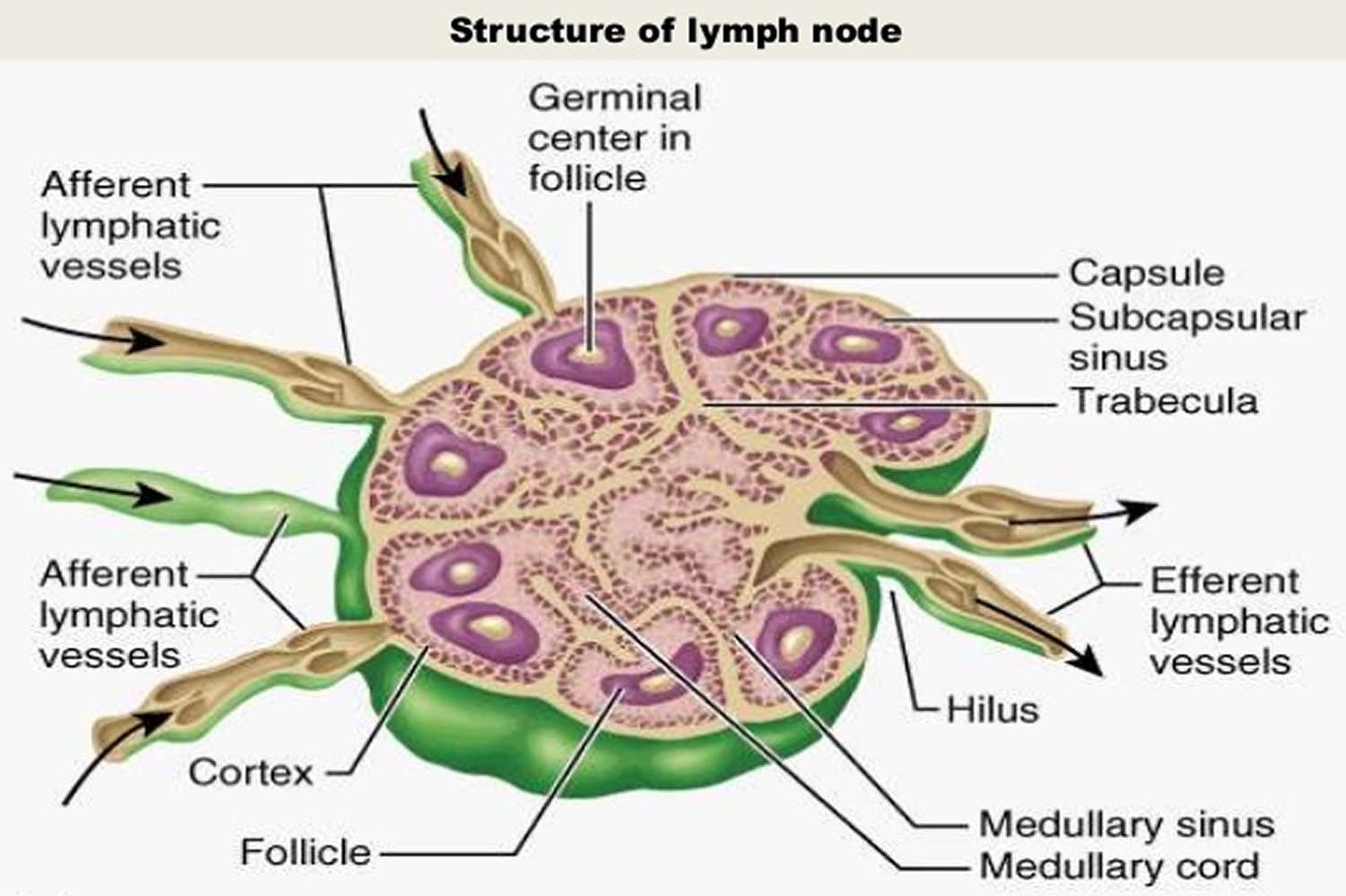 Especially if a dog is overweight or there are only mildly swollen lymph nodes, it may be a little trickier to locate the axillary and inguinal lymph nodes. The prescapular lymph nodes, located in front of the shoulders and near big neck muscle bodies, can also be a little trickier to detect if only slightly enlarged.
Especially if a dog is overweight or there are only mildly swollen lymph nodes, it may be a little trickier to locate the axillary and inguinal lymph nodes. The prescapular lymph nodes, located in front of the shoulders and near big neck muscle bodies, can also be a little trickier to detect if only slightly enlarged.
Dog lymph node location chart
Check out this handy dog lymph node location chart to help you visualize where your dog’s lymph nodes are. This may make it easy for you to find and palpate your dog’s lymph nodes.
This dog lymph node location chart showcases where you should be able to feel lymph nodes in your dog.
How do I check my dog’s lymph nodes?
When I talk about palpating lymph nodes, what I mean is using your hands to feel the lymph node and check for any swelling. In order to do this, you need to know several things—where to find the lymph nodes (which we already discussed), how to palpate, and what a normal lymph node should feel like.
How do you palpate a lymph node?
In general, palpating involves running your hands along a particular area of the body in order to detect any deviation or swelling that wasn’t there before. You’ve probably already done this to your furry friend if you practice my tip-to-tail dog wellness scan.
Gently running your hands over your dog’s fur and skin while petting him or her can be a great way to look for things like insect bites, hives, cysts, and other skin lesions. Looking for swollen lymph nodes is really not all that different. It just means you need to feel specific places where lymph nodes are located. Sometimes it helps to gently grasp the deeper tissues in the region with your thumb and forefinger and feel for a round to oval structure.
How big should lymph nodes be in dogs?
In healthy dogs or cats, many times the lymph nodes are small enough that you barely feel them. And that is a good thing because lymph nodes should be pea sized in small dogs to grape sized in large dogs.
If the lymph nodes are swollen, they will typically be much more prominent. In some cases, a swollen lymph node (or lymph nodes) can become two, three, or even four-times their normal size. Those are much easier to feel, and you can often see them at that point too.
The red circles show where the dog’s prescapular lymph nodes can be palpated.
Try to get a good sense of what the lymph node locations normally feel like on your dog. Can you feel any sort of bump with gentle pressure? If so, how big is it and what does it feel like? You could also consider asking your veterinarian to help you properly locate and palpate your dog’s lymph nodes. That way you have a bit of muscle memory when you go to do it yourself.
Routinely palpating your dog’s lymph nodes yourself can come in handy because it makes it more likely you will catch enlargement when it is still mild.
Beware of lymph node lookalikes
I do want to mention one other thing to keep in mind. Sometimes a swollen lymph node can be easy to confuse with something else.
Sometimes a swollen lymph node can be easy to confuse with something else.
For example, the submandibular lymph nodes are located at the part of the dog’s neck that is near the jaw. However, salivary glands dwell in this area too, and they can feel just like enlarged submandibular lymph nodes. Or, if your dog has a lipoma in dogs or other mass right at the same spot where you would expect a lymph node, you might mistake one for the other.
If you find yourself unsure about what you are feeling or if you think your dog has a swollen lymph node at one of the locations, consult your veterinarian. There are many reasons a dog may have swollen lymph nodes—some of which are worse than others.
Before we get into the causes for swollen lymph nodes in dogs, let’s pause for a moment and define some terms. The medical word for enlarged lymph nodes is “lymphadenopathy” or “lymphadenomegaly.” However, sometimes vets may also use terms that describe the process leading to the lymphadenopathy. For example, the term “reactive lymphoid hyperplasia” denotes lymph node enlargement due to the increase in lymphocytes numbers as part of an immune reaction.
For example, the term “reactive lymphoid hyperplasia” denotes lymph node enlargement due to the increase in lymphocytes numbers as part of an immune reaction.
What causes swollen lymph nodes in dogs?
Now that we have the terms cleared up, let’s take a look a the two main reasons for enlarged lymph nodes—infection and cancer.
Infections, like dental disease, can cause the dog’s submandibular lymph nodes to enlarge.
1. Swollen lymph nodes in dogs due to infection
As mentioned earlier, lymph nodes can become enlarged when lymphocytes interact with foreign materials. Bacterial infections and fungal infections in dogs can cause lymph nodes to enlarge in one part of the body or in several, depending on how widespread the infection may be. Also, tick-borne disease in dogs may cause widespread lymphadenpathy.
On the other hand, ear infections (i.e. otitis in dogs), dental disease in dogs, and upper respiratory infections may specifically lead to swollen submandibular lymph nodes.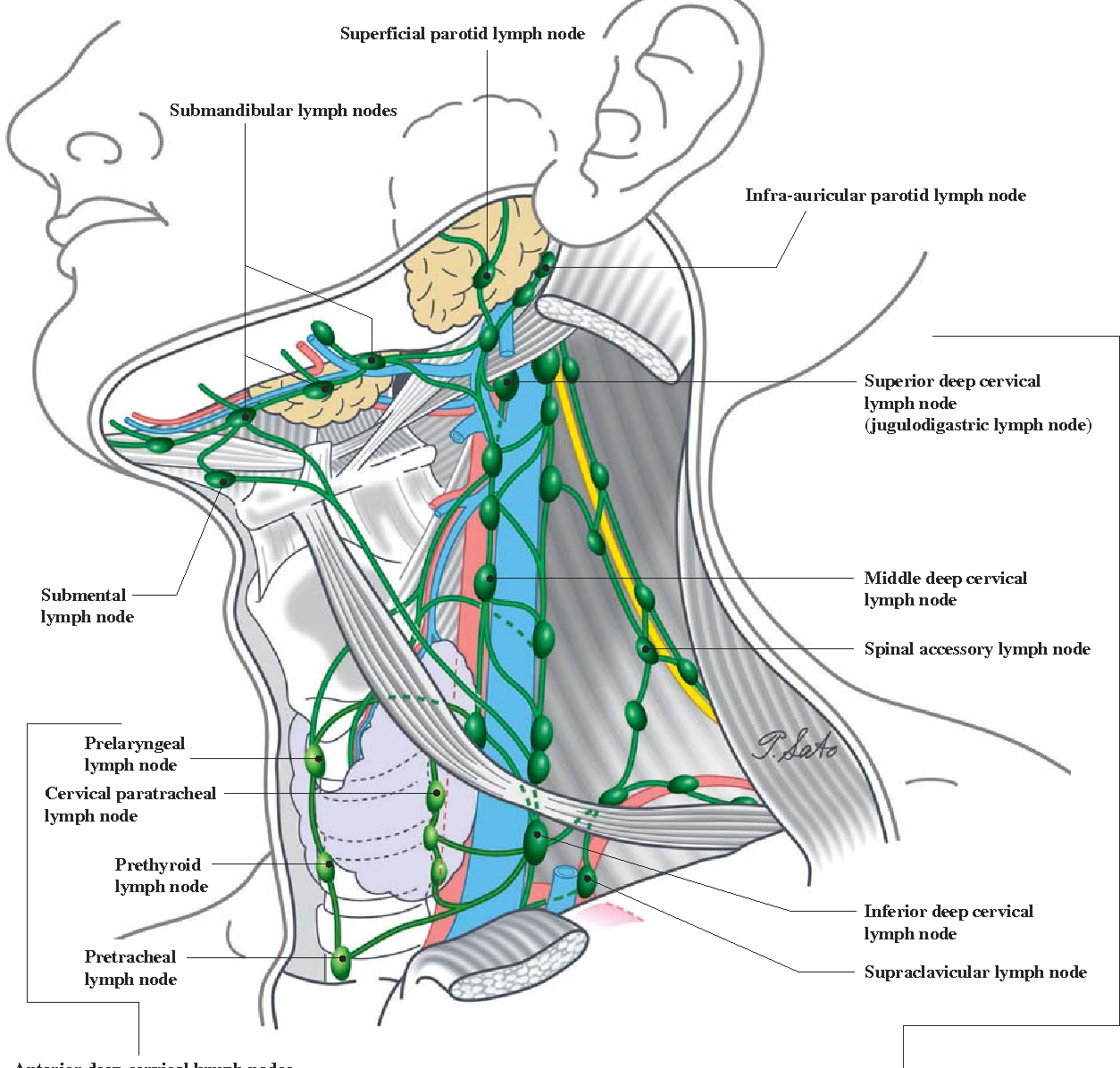 This is because those lymph nodes receive lymph from the head, which is where the infection is located.
This is because those lymph nodes receive lymph from the head, which is where the infection is located.
Finally, allergic reactions, which are really a type of immune reaction, can also trigger lymphadenomegaly.
2. Lymph node cancer in dogs
Certain types of cancer can lead to lymph node enlargement. Lymphoma in dogs is a kind of cancer that can impact all parts of the lymphatic system. It may start out as enlarged lymph nodes in one part of the dog’s body. But, in more advanced stages, it can spread to other lymph nodes and/or lymphoid organs like the spleen. Basset Hounds, Boxers, Bulldogs, Bullmastiffs, and Golden Retrievers all have an increased risk for the development of lymphoma, primarily when they are middle-aged or older.
Other types of cancer such as mast cell tumors, melanomas, and adenocarcinomas may eventually metastasize (i.e. spread) to a lymph node or multiple lymph nodes. This would also cause lymph node enlargement.
What other symptoms may occur with swollen lymph nodes?
Based on the range of conditions that can cause lymphadenopathy, it makes sense that dogs with swollen lymph nodes can experience a variety of other symptoms.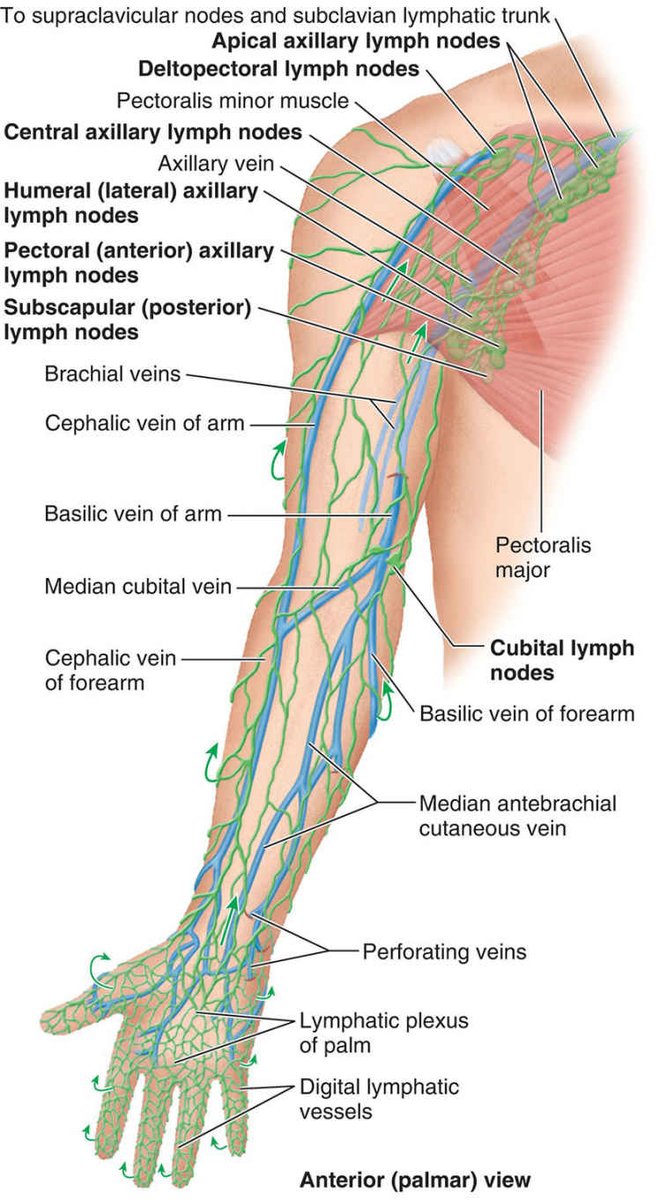
Enlarged lymph nodes may cause several different symptoms in your dog.
For example, a dog with an upper respiratory infection might also be coughing or sneezing. Pain while eating, foul breath, or older dogs losing teeth are all signs of dental disease. Other infections could cause a fever or a lethargic dog. Dogs with tick-borne diseases like Lyme disease in dogs may experience mobility issues and lameness in multiple limbs.
And sometimes there aren’t any other symptoms right away. That tends to be the case with lymphoma where the swollen lymph nodes are the first sign of a problem.
If you believe your dog has a swollen lymph node, please schedule an appointment with you vet. As mentioned above, there are many reasons your dog may have a swollen lymph node(s), and some are more serious than others.
What can you expect at the vet appointment?
At the appointment, your veterinarian will take your dog’s other symptoms, history, and the results of the physical exam into consideration when creating a diagnostic plan. This plan could run the gamut from blood work and urine testing to imaging like X-rays or ultrasound.
This plan could run the gamut from blood work and urine testing to imaging like X-rays or ultrasound.
Generally your vet will perform a fine needle aspirate test on one or more of the enlarged lymph nodes. This is a test where the vet uses a needle and syringe to collect cells from the lymph node. Then, the vet views the cells under the microscope to gain more information about what is going on.
Sometimes, the vet will be able to visualize an infectious agent like bacteria in the lymph node aspirate. Other times, seeing an abundance of big, blue-stained immature lymphocytes (i.e. lymphoblasts) can point to a diagnosis of lymphoma in dogs.
Alternatively, the vet may discover cells from other types of cancer that have made it to a particular lymph node. For example, oral melanoma can make pigmented cells appear in the lymph node aspirate.
If your veterinarian is not sure about the contents of the lymph node aspirate, he or she can submit the microscope slides to a pathologist for further insight. If a fine needle aspirate is insufficient for obtaining a diagnosis, your vet (or the veterinary pathologist) may recommend a biopsy of the lymph node.
If a fine needle aspirate is insufficient for obtaining a diagnosis, your vet (or the veterinary pathologist) may recommend a biopsy of the lymph node.
Your veterinarian may submit a sample of a lymph node to the lab for cytology or histopathology.
What are the treatment options for swollen lymph nodes in dogs?
Once your vet has determined the cause of the enlarged lymph nodes, he or she can make a treatment plan. If a fine needle aspirate confirms reactive hyperplasia, treatment centers around addressing the source of the infection.
This may involve performing a dental procedure to clean your dog’s teeth and extract any diseased ones. Or it may mean treating an infection with antibiotics or antifungals. It may take a few days or weeks for the lymph nodes to return to normal size after the infection is gone.
Cancer patients may have any number of treatments depending on the type and stage of their cancer. With lymphoma, some dog parents elect to treat with prednisone for dogs while others pursue chemotherapy with a veterinary oncologist.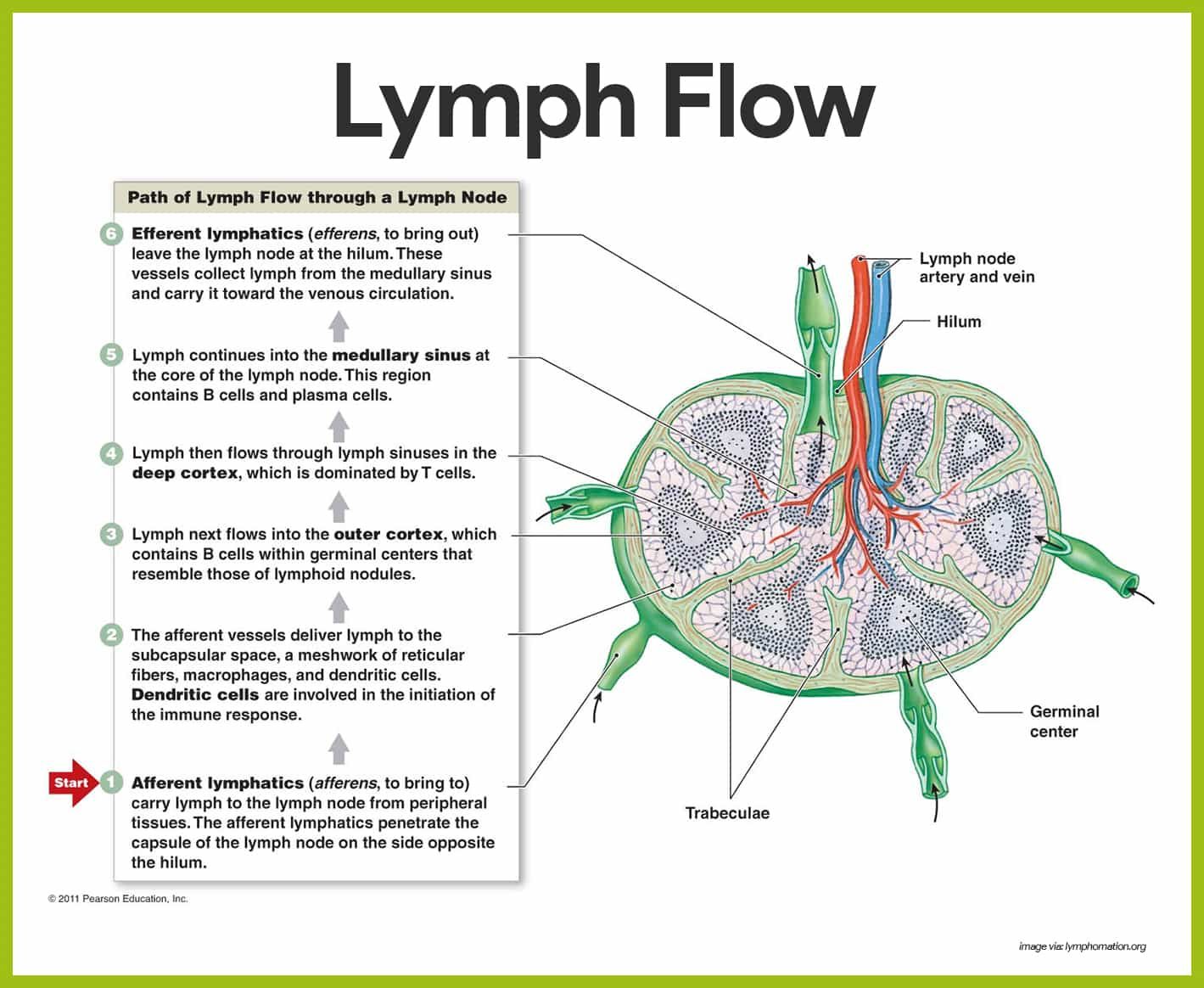 While lymphoma is not completely curable, chemo can put lymphoma into remission for a period of time.
While lymphoma is not completely curable, chemo can put lymphoma into remission for a period of time.
Whatever the diagnosis, you can count on your veterinarian to walk through it with you. He or she is a valuable asset and—just like you—has your dog’s best interest in mind.
What can I do for my dog with swollen lymph nodes?
It’s important to point out that there are no home remedies for dogs with swollen lymph nodes. As a dedicated dog parent, the best thing you can do is to seek treatment by a veterinarian if you suspect a problem.
There are, however, some things you can do to reduce your dog’s chances of having swollen lymph nodes from an infection.
- Remember to keep your dog up-to-date on vaccinations for infectious diseases. Vaccinations for upper respiratory conditions like kennel cough and tick-borne diseases like Lyme disease are particularly important.
- Use flea, tick, and heartworm prevention all year round. Diseases carried by tick bites can cause swollen lymph nodes.

- Work with your vet to develop an at-home daily dental hygiene routine for your dog. There are many good dental products on the market. But brushing your dog’s teeth is still the best way to ward off dental disease. This is important because, as we discussed, bad teeth in dogs can cause swollen lymph nodes.
- Choose safe chew toys for your dog to help prevent fractured teeth.
- Make notes about your furry friend’s travel history. (There are places where fungal infections may be more common.)
- If your dog is susceptible to allergies, ask your vet about allergy medicines for dogs.
Finally, I would urge you to incorporate lymph node palpation into your dog’s health routine. Learning to locate your dog’s lymph nodes and familiarizing yourself with what those areas feel like can be a great tool for finding swollen lymph nodes rapidly. In turn, this means that your vet can start treatment sooner.
The two red circles show where you should be able to feel the popliteal lymph nodes.
Become a lymph node locating pro
With practice, it can become easier to know the locations of the peripheral lymph nodes. The dog lymph node location chart included in this article is a great starting point. However, if you are struggling to find your dog’s lymph nodes, don’t feel bad. I want you to understand that even a skilled hand can sometimes miss something so tiny!
Also, keep in mind that even if you do become proficient at finding your dog’s lymph nodes, this isn’t a substitution for routine physical exams with your dog’s vet. His or her trained fingers may notice a swollen lymph node that escaped your detection. Plus, wellness exams can also be a great way to screen for any other health issues. So be sure to schedule an examination for your sweet senior dog at least twice a year.
And, as always, if you have any concerns with your dog’s health or think you may have found an enlarged lymph node, please talk to your veterinarian.
What questions do you have about dog lymph nodes?
Please comment below.
Lymphatic System Anatomy–Lymphosurgery Center
The lymphatic system is an important part of the human cardiovascular system and complements it.
Unlike the circulatory system, the lymphatic system does not have its own pump and is open. The lymph circulating in it moves slowly and under little pressure. Lymph is a fluid that is constantly formed by drainage of interstitial fluid into the lymphatic capillaries.
The structure of the lymphatic system includes:
• lymphatic capillaries
• lymphatic vessels
• lymph nodes
• lymphatic trunks and ducts
subclavian trunks; on the right into the right lymphatic duct, right jugular and right subclavian trunks. The ducts and trunks flow into the large veins of the neck, and then into the superior vena cava. In this way, lymph is transferred from the interstitial spaces back into the blood.
Lymphatic vessels pass through the lymph nodes. They are combined into several groups and are located along the vessels. Many afferent vessels carry lymph to the node, and it flows out from there only through one or two efferent vessels. Lymph nodes are small formations of a round, oval, bean-shaped, less often ribbon-shaped form up to 2 cm long. Here, lymph is filtered, foreign matter is separated and destroyed, and lymphocytes are produced here to fight infection. Lymph nodes that perform a barrier and immune role.
Many afferent vessels carry lymph to the node, and it flows out from there only through one or two efferent vessels. Lymph nodes are small formations of a round, oval, bean-shaped, less often ribbon-shaped form up to 2 cm long. Here, lymph is filtered, foreign matter is separated and destroyed, and lymphocytes are produced here to fight infection. Lymph nodes that perform a barrier and immune role.
Main functions of the lymphatic system:
• Transport function – carrying lymph, metabolic products from tissues to the venous bed.
• Drainage function – the return of proteins, water, salts, toxins and metabolites from tissues to the blood. Removal of fluid, pus, effusion from the wound, cavities. Stability of the “capillary lymphatic pump”
• Lymphocytopoiesis, hematopoietic function – formation, maturation, differentiation of lymphocytes involved in immune reactions.
• Immune, protective functions – formation of the body’s immune defense, neutralization of foreign particles, bacteria, viruses, fungi, protozoa that enter the body. filtration from impurities, tumor particles and cells.
Any failure or blockage of the lymphatic vessels or nodes entails swelling or swelling of the tissues, lymphadenitis, erysipelas, lymphostasis occur. Experts, not without reason, believe that the lymph could tell about what the blood is “silent about”, because many of the waste products of the cells first enter the lymph, and then into the blood.
If most doctors can help us in the fight against many diseases, then only individual doctors – lymphologists – can diagnose and treat disorders in the lymphatic system.
According to the statistics of doctors themselves, in the CIS there are only a few lymphologists – specialists in the lymphatic system.
Lymphologists say: Your health is the purity of your lymphatic system!
Be healthy and happy!
where they are located, what functions they perform, in which diseases 9 increase0001
Inflammation and enlargement of the lymph nodes usually causes discomfort and pain. As a rule, this indicates that an inflammatory process is underway in the body.
As a rule, this indicates that an inflammatory process is underway in the body.
What are lymph nodes
Lymph nodes are the most important organs that perform a barrier-filtration function 1 . Their main function is the biological filter of lymph – a colorless liquid that washes all the tissues and cells of the body. It consists of plasma and formed elements. Interestingly, lymph plasma has an almost similar chemical structure to blood plasma, but contains fewer proteins 2 .
Useful information about lymph nodes
| Number in the body | about 600 lymph nodes 3 |
| Functions | barrier-protective, hematopoietic, drainage (promotes the outflow of excess fluid), reserve, exchange |
| Common causes of increase | infectious processes (especially acute upper respiratory tract infections), autoimmune diseases, tumors |
| Complications of inflammation | transfer of infection to nearby tissues, vein thrombosis, impaired lymph outflow |
| What not to do with lymph nodes in case of inflammation , press |
Where are the lymph nodes
Lymph nodes are found almost everywhere. They are arranged in such a way as to become an obstacle in the way of various “garbage”: toxins, viruses, bacteria, parasites, fungi, cancer cells.
They are arranged in such a way as to become an obstacle in the way of various “garbage”: toxins, viruses, bacteria, parasites, fungi, cancer cells.
Most lymph nodes are located deep under the skin and even near internal organs where they cannot be felt. But some lymph nodes – under the jaw, in the armpits, in the groin – can be palpated even in a healthy, non-inflamed state.
Photo: Shutterstock
Functions of the lymph nodes
As mentioned earlier, the main function of the lymph nodes is barrier-protective function. In these organs of the lymphatic system, protective cells of the body are formed, such as lymphocytes, antibodies, phagocytes. Lymph nodes protect against the penetration of infections, and also prevent the reproduction of malignant tumor cells and play a role in the immune response to substances foreign to the body.
The lymph nodes also perform the following functions:
- hematopoietic – after the lymph nodes, lymph enriched with lymphocytes gets into the blood;
- drainage – promote the outflow of excess fluid;
- depository (reserve) – lymph node is a temporary storage of lymphocytes and lymph.
 The latter lingers in the lymph node in order to ensure the unloading of the bloodstream in “emergency” situations, for example, during venous congestion;
The latter lingers in the lymph node in order to ensure the unloading of the bloodstream in “emergency” situations, for example, during venous congestion; - metabolic – lymph nodes are involved in the metabolism of fats, proteins, carbohydrates and other substances.
Causes of swollen lymph nodes
Lymph nodes have their own diseases, and most often their inflammation is a reaction to some other disease or condition. Completely different reasons can lead to an increase in lymph nodes (lymphadenopathy). Consider the most common of them.
Local infections
Infection is one of the most common causes of swollen lymph nodes.
— For example, it can be acute respiratory diseases, leading to an increase in regional lymph nodes associated with the area in which inflammation occurs, says general practitioner Oksana Khamitseva.
As a rule, the focus of the disease is located near enlarged lymph nodes. So, with infections of the upper respiratory tract, the lymph nodes in the neck become inflamed, with a sexual infection – in the groin.
So, with infections of the upper respiratory tract, the lymph nodes in the neck become inflamed, with a sexual infection – in the groin.
Generalized viral and bacterial infections
If only one category of lymph nodes is affected, then they speak of local inflammation. If the nodes that are not adjacent to each other increase, then we are talking about a generalized inflammation of the lymph nodes.
This widespread inflammation can be caused by infections – bacterial, viral, fungal, which affect the entire body. It can be tuberculosis, some infectious skin diseases, rubella, chickenpox, cytomegalovirus, mononucleosis, HIV and others.
Autoimmune diseases
Autoimmune connective tissue diseases such as arthritis and systemic lupus erythematosus can also lead to swollen lymph nodes. In such diseases, the body begins to attack its own cells. Due to the increasing load on the lymph nodes, their inflammation occurs.
Tumor processes
Swollen lymph nodes can also signal tumor processes in the body. As we wrote above, lymph nodes prevent the reproduction of cancer cells, but in some cases, tumor cells can get stuck in them and multiply. Tumor processes can lead to the development of leukemia, lymphogranulomatosis, lymphoma.
Hypersensitivity of the body
Allergic reactions can also provoke inflammation of the lymph nodes. In addition, their increase may be associated with hypersensitivity to certain drugs.
How lymph nodes are treated
The treatment of lymphadenopathy is varied and always depends on its cause. An increase in lymph nodes is a signal of inflammation, so you need to look for its source.
Most often, inflammation of the lymph nodes occurs as a secondary process, that is, a reaction to another disease:
- if this is associated with acute respiratory infections, then it is necessary to treat the respiratory tract infection itself, be it a bacterium or a virus;
- if it is associated with a generalized infection (mononucleosis, HIV), then long-term specific therapy is selected here;
- cat-scratch disease (felinosis) is treated with special antibiotics;
- Sepsis is controlled only in the hospital by intravenous administration of various drugs, including antibiotics, and ionic solutions.

- autoimmune diseases (systemic lupus erythematosus, Kawasaki disease, etc.) are treated by a rheumatologist, prescribing hormones or cytostatics for long courses under constant supervision.
Lymphadenopathy can also be caused by cancer. Conventionally, they can be divided into 3 sections:
- leukemia, when the primary malignant focus is in the bone marrow;
- lymphomas, when the foci are located directly in the lymph nodes;
- metastases, when the focus is located in the internal organ, and cancer cells affect the lymph nodes in the path of lymph outflow.
— In the case of leukemia, a bone marrow transplant is possible. With lymphoma, it is useless to do this, you can only use various options for radiation, chemotherapy, genetic engineering methods. And if lymphadenopathy is caused by metastases, then, as a rule, the tumor of the corresponding organ is removed, entering healthy tissues and capturing the “package” of affected lymph nodes, says our expert Oksana Khamitseva.
How to maintain the health of the lymphatic system at home
According to physician Oksana Khamitseva, the health of the lymphatic system primarily depends on two components: good lymphatic drainage and normal functioning of the immune system. This is not difficult to achieve:
- regular physical activity;
- avoid tight, constricting clothing;
- smoking and alcohol cessation;
- courses of multivitamins 2 times a year;
- food high in protein and fiber in the diet;
- adequate fluid intake.
Popular questions and answers
General practitioner Oksana Khamitseva answers popular questions about lymph nodes.
Which lymph node is responsible for what?
– Each internal organ is supplied with lymph nodes, arteries and veins. If we talk about those lymph nodes that we can feel:
• Submandibular: increase with rhinitis, pharyngitis, tonsillitis, inflammation of the teeth and gums.
• Cervical: inflamed with acute respiratory infections, conjunctivitis, otitis media.
• Parotid: react to otitis media, acute respiratory infections.
• Occipital: increased with head and neck infections, acute tonsillitis, infectious mononucleosis.
• Axillary: may also be associated with mononucleosis, mastitis, breast cancer, HIV, cat scratch disease.
• Elbows: felinosis, HIV.
• Inguinal: mumps, generalized infections, inflammation of the urogenital organs.
What to do if the lymph nodes are inflamed?
— If you have lymphadenitis, you need to see a doctor, because you don’t know what it can be connected with. If you notice an increase in lymph nodes in the head and neck, there are signs of acute respiratory infections (runny nose, sore throat, cough, fever), then you can independently start taking vitamins, antiviral drugs, NSAIDs, symptomatic treatments for colds.
If you notice an increase in lymph nodes, which is objectively not related to the infectious process, then doing something without a doctor’s recommendation can be dangerous. Even taking vitamins, if the process is autoimmune, will spur the immune system to even more aggressive inflammation.
Even taking vitamins, if the process is autoimmune, will spur the immune system to even more aggressive inflammation.
Why is inflammation of the lymph nodes dangerous?
— Complications of lymphadenitis include:
• transfer of infection to nearby tissues: bones, subcutaneous fat, skin;
• blockage by blood clots of veins adjacent to inflamed lymph nodes;
• violation of lymphatic drainage, edema, “elephantiasis” of the limbs.
What can not be done with enlarged lymph nodes?
– If you notice an increase in lymph nodes, then it is strongly not recommended to ignore it, heat or apply ice, make lotions without the permission of a doctor. Also, do not smear with anti-inflammatory ointments (you will reduce one lymph node and decide that you are cured, and if it is an oncology?), squeeze and massage the lymph node.
The patient does not know in which direction the lymph flows from this or that lymph node, and if you make the wrong movements, stagnation can be provoked.
Which doctor treats lymph nodes?
— All roads lead to a therapist. After examination and examination, a specialist can identify what lymphadenitis is associated with, treat acute respiratory infections or refer to an ENT doctor, an infectious disease specialist if an infectious process is detected. If an autoimmune disease is detected, your doctor is a rheumatologist, and in case of suspicion of leukemia or lymphoma, an oncologist.
Sources:
- Semioshko N.V. Lymph nodes adjacent to the celiac trunk // BBC 28.706 Ya431 V 38. – 2014. – P. 111. http://sno.grsmu.by/conference/mk47.pdf#page=111
- Pogrelchuk O.E., Danko E.S. Blood and lymph. Hematopoiesis // In the world of scientific discoveries. – 2018. – S. 219-221. https://www.elibrary.ru/download/elibrary_36443065_39723184.pdf
- Dvoretsky L.I. Differential diagnosis in lymphadenopathy // Handbook of a polyclinic doctor. – 2005. – no. 2.



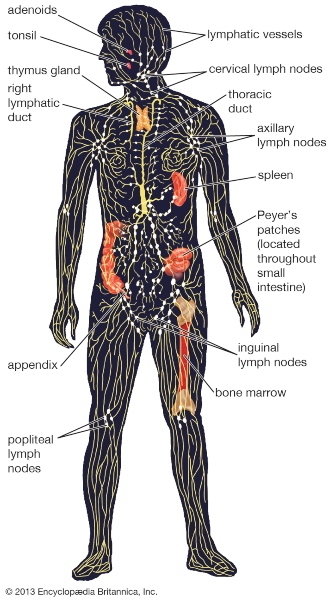
:background_color(FFFFFF):format(jpeg)/images/library/12654/lymphatic-system_english.jpg) The latter lingers in the lymph node in order to ensure the unloading of the bloodstream in “emergency” situations, for example, during venous congestion;
The latter lingers in the lymph node in order to ensure the unloading of the bloodstream in “emergency” situations, for example, during venous congestion;
